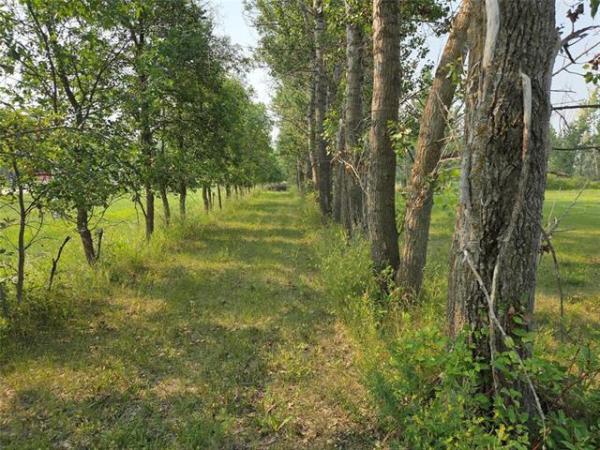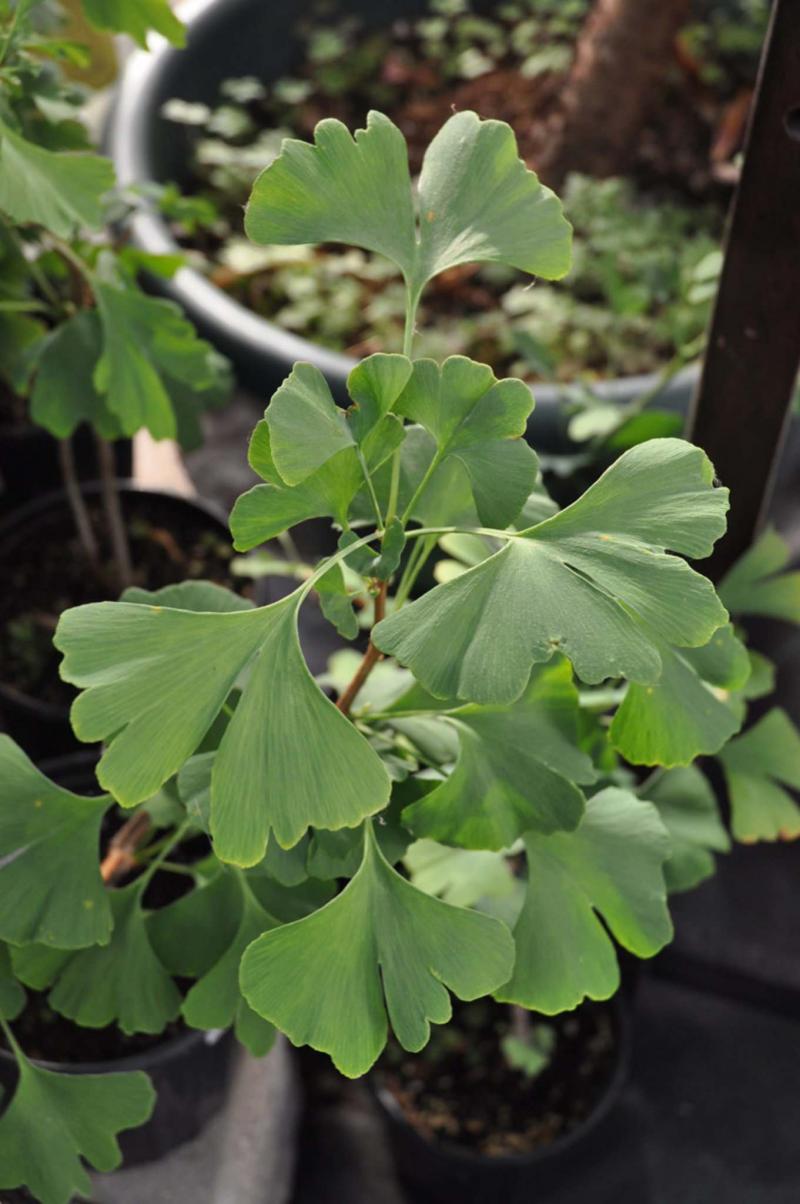
Sage Garden Greenhouses
Should you? Yes, be adventurous. Try growing Gingko biloba in a container or in your garden.
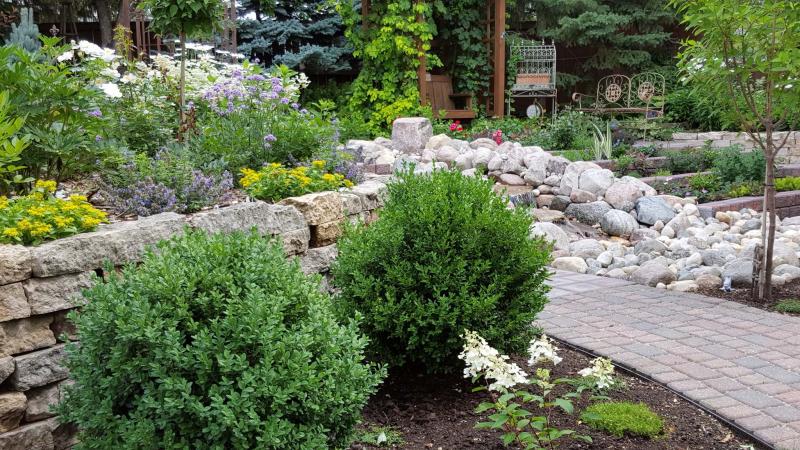
Colleen Zacharias
The key to the Green Mountain boxwood’s survival is protection from exposure to northwest winds and the winter sun.
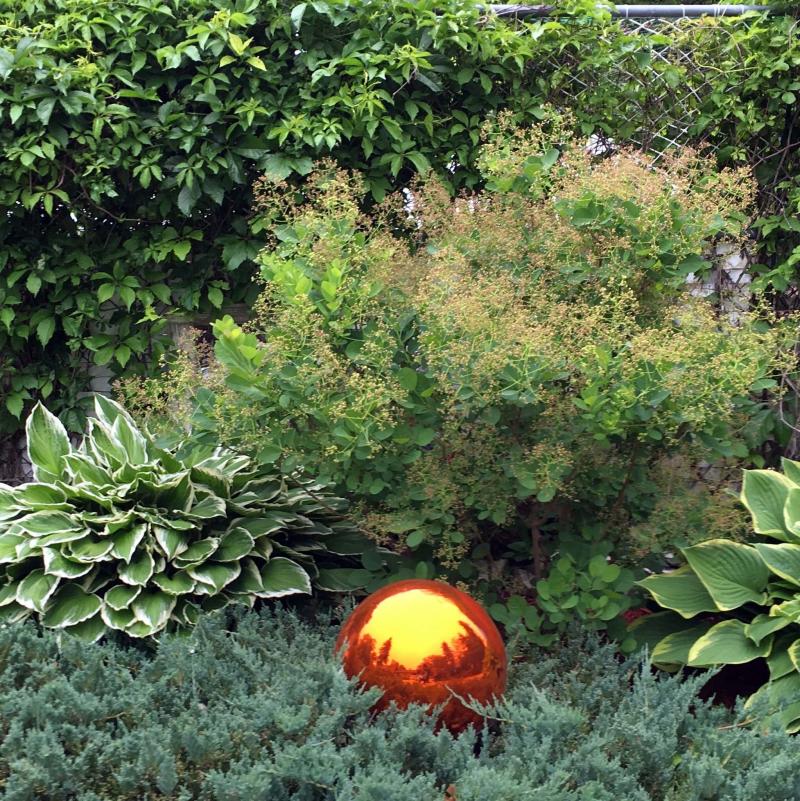
Colleen Zacharias
Young Lady, a compact smoke bush variety, prepares in June to start its long flowering season.
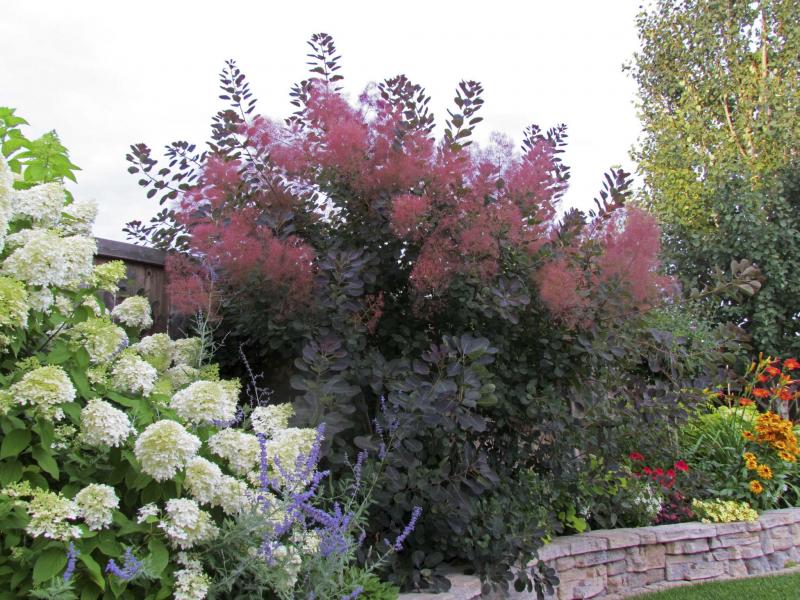
Colleen Zacharias
Smoke gets in your eyes and it’s a beautiful thing to see on this substantial Royal Purple smoke bush in this St. Vital garden. Follow some basic principles for survival to ensure the longevity of this zone 5 specialty plant.
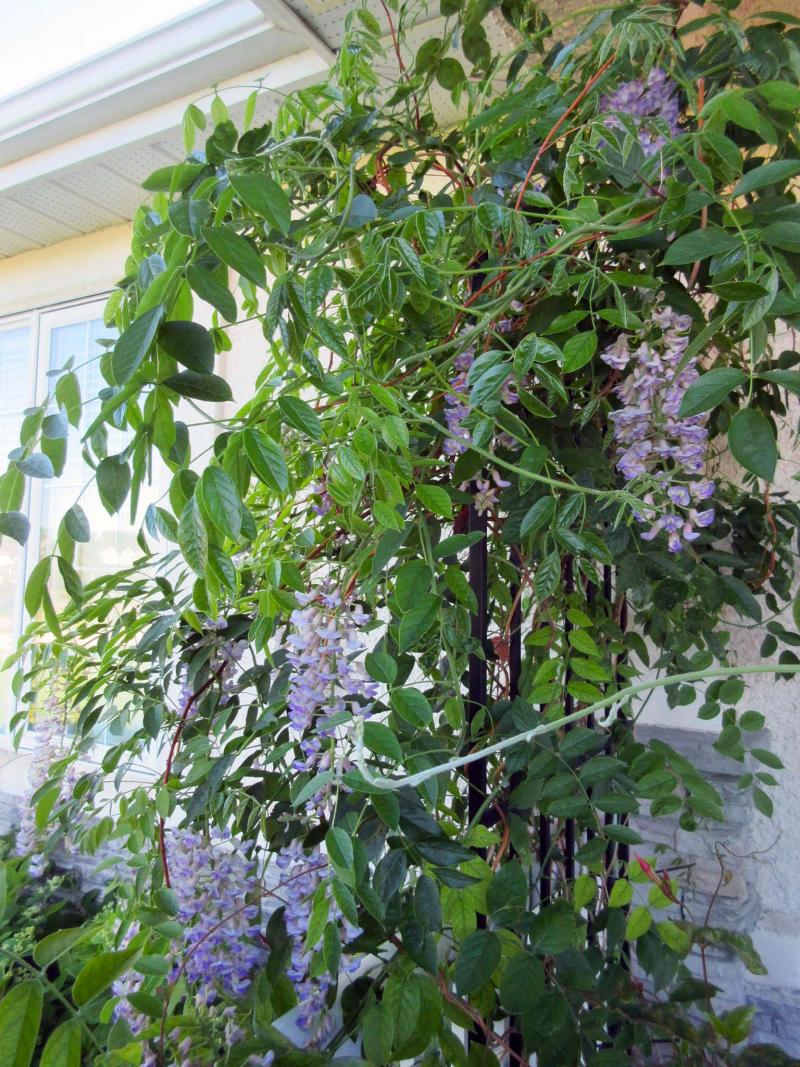
Edith Redekop
Patience and some judicious pruning is required while you wait for zone 4 Blue Moon Kentucky wisteria to bloom. But bloom it finally did in Edith Redekop’s Niverville garden.
If you have purchased a specialty plant (otherwise known as a plant meant for a warmer climate) and want to see it survive outdoors in our cold climate, it’s essential to follow some basic principles.
Success in the garden, whether you have purchased a plant hardy to our zone 3 or a borderline hardy plant (zone 4 or zone 5), begins by establishing a healthy root system. Good soil structure, adequate levels of organic matter, even moisture, irrigation during periods of high heat and drought, a planting site that provides the required amount of light and protection from severe northwest winter winds are all important factors. A five-centimetre layer of mulch, particularly in the first season of growth, is essential to ensure cool roots and conservation of moisture.
Should you prune your new plant? It’s best not to for the first couple of years unless it’s to clean up any broken branches or to remove dead tip growth.
In the case of flowering plants, equipping yourself with knowledge of a plant’s growth habits and bloom cycle will guide you in knowing how to train your plant via judicious and timely pruning.
Despite coddling and resolute determination, however, there is a reason why accent plants or hobby plants are usually sold without a warranty. Frankly, in our climate, plants such as wisteria, boxwood, smoke bush and Gingko biloba are iffy to varying degrees. Come spring, after a classic Manitoba winter, gird your loins for the possibility of disappointment, i.e. no signs of life. That said, exercise patience as your new plant may take its sweet time before it decides to stir from its winter sleep.
In some cases, blooms may take several years before finally appearing and, even then, they may be few in number. In addition, while snow is a great insulator, tender growth above the snowline may routinely die each year ultimately dwarfing the plant over the long-term.
Keep in mind that your new pièce de résistance is not in Kansas anymore — it must adapt to the growing conditions in your backyard. Blue Moon Kentucky wisteria, for example, has a preference for enriched, well-drained, slightly acidic soil. This zone 4 vine could easily balk at being installed into Red River clay, which is typically alkaline. To acidify the soil slightly, mix one part peat moss with three parts topsoil into the hole at planting time.
In southern Manitoba gardens where Blue Moon Kentucky wisteria can be found thriving, each gardener I talked to acknowledged its ability to produce plenty of vegetative growth but also its stubborn reticence in producing blooms for the first several years.
For Edith Redekop in Niverville and Deb Fast and Bonnie Lenton in Winnipeg, the wait seemed interminable, but when the showy, fragrant lavender-blue blooms appeared at long last, there was rejoicing. Admittedly, the blooms are not overly abundant. Never mind, they are magnificent all the same. Now the challenge lies in ensuring proper pruning techniques for reliable bloom in subsequent years.
Wisteria’s flowers develop on the previous year’s growth. At the outset, only a light pruning is necessary. Once this sun-loving plant has been trained to grow on a sturdy support that will support its substantial size, prune back the long vegetative shoots to about 15 cm after the vine has finished blooming. A second pruning is recommended while the plant is still dormant and the framework is easily visible, leaving three to five buds.
Boxwood can be found growing locally in many gardens. Plant tags at local garden centres steadfastly classify this highly desirable evergreen shrub as either zone 4 or zone 5. The variety most commonly available is Green Mountain boxwood. Key to boxwood’s survival is a sun-dappled location or light shade with several hours of morning sun. In fall, ensure that your boxwood goes into the winter well-watered. A location that receives plenty of snow cover is essential. Above all, protect your boxwood from desiccation or dehydration in winter by locating it in a site where it is not exposed to the winter sun or you will be throwing it out in a hurry come spring.
Boxwood can be at risk if a winter is particularly severe. One option is to create an enclosure using wooden stakes at a height taller than your plant. Staple burlap to the stakes making sure that the burlap is not touching the foliage. Again, complete snow cover is a must. Take care to not prune your boxwood too early in spring. The resulting flush of new growth can sustain injury if temperatures dip suddenly.
Smoke bush (Cotinus coggygria) is a deciduous, sun-loving shrub with broadly oval leaves that is also classified as zone 5. It has a long bloom season, producing panicles of fluffy flower heads that are as fascinating as they are beautiful. Smoke bush flourishes in many local gardens. Royal Purple smoke bush has plum red foliage that turns a brilliant orange-red in fall. While Susan Southern’s Royal Purple smoke bush in St. Vital and Ernie Brown’s in Transcona are almost the size of trees, there are also local examples where only the stems and branches protected by snow cover are the ones to survive.
Adaptable to our clay soils, there are a number of smoke bush varieties available including Golden Spirit, a compact variety with golden yellow foliage and Young Lady, a dwarf green variety that gets covered with pink-tinged blooms starting in June. Trish Jordan-Downes, a Kirkfield-area gardener, purchased her Young Lady smoke bush about 10 years ago. She prunes it in the fall about every second year in order to maintain a bushy form. By all accounts, each of these gardeners says that smoke bush is relatively easy to grow.
Another out-of-zone plant species that causes gardeners to swoon is Gingko biloba, a deciduous tree. Dave Hanson, owner of Sage Garden Greenhouses, started numerous Gingko biloba plants from seed eight years ago. This year demand was so high that he quickly sold out of his supply and is now propagating a new inventory from stem cuttings.
Hanson knows of at least one local example that has been growing outdoors for almost 25 years.
A location protected from northwest winds is critical, he says. One very doable option, he says, is to grow your Gingko tree in a container and bring it indoors for the winter but only after it has been exposed to cool temperatures in the fall. Leaf drop is a vital stage in the natural process. A few light frosts will encourage the dormancy that is so necessary to deciduous trees. Avoid storing your Gingko in an unheated garage, says Hanson. Choose instead to locate it in a basement or cold room or a heated garage where the temperature is just above freezing.
Check on the root system every couple of weeks, ensuring that a bit of moisture is maintained in the root system. Give your plant a good, deep watering periodically. In March, move it to a brighter location. Once signs of new growth appear, Hanson recommends feeding by fertilizer and a gradual move outdoors once risk of a hard frost has passed.
Be adventurous but also diligent and realistic. Quite possibly, magic could happen.
colleenizacharias@gmail.com



